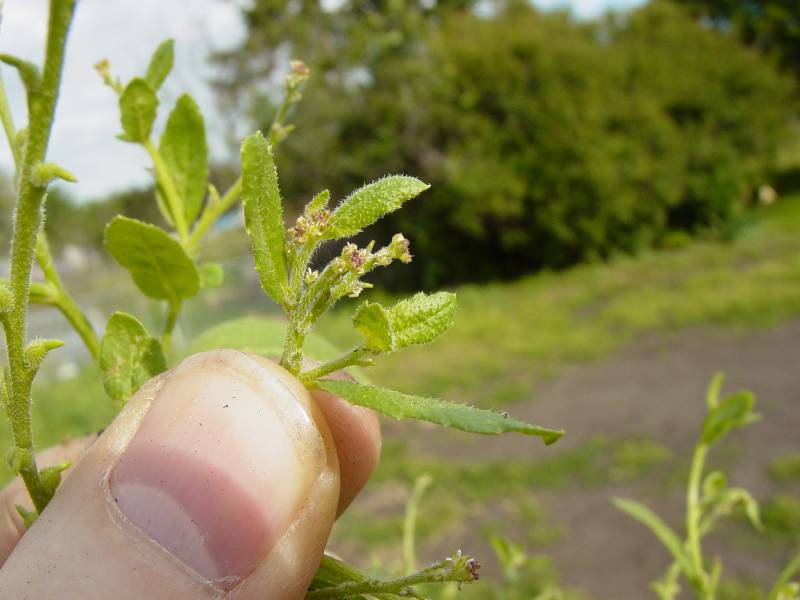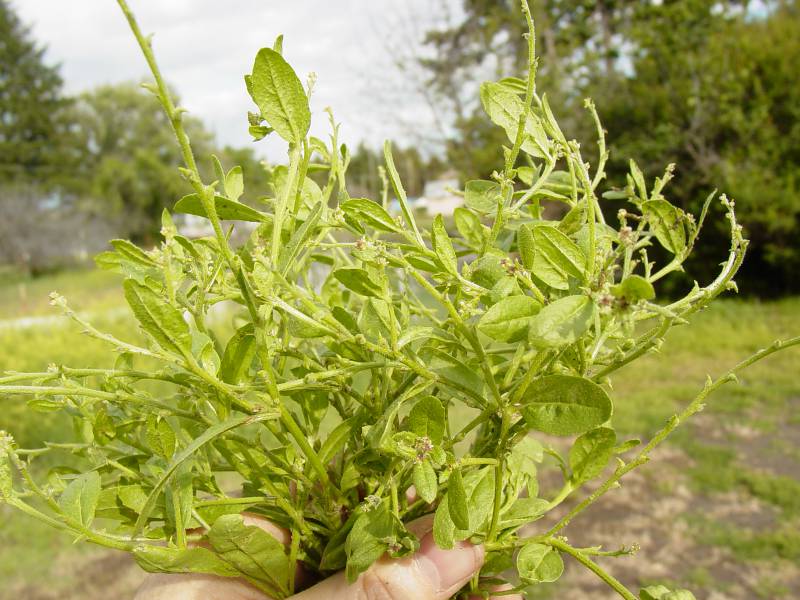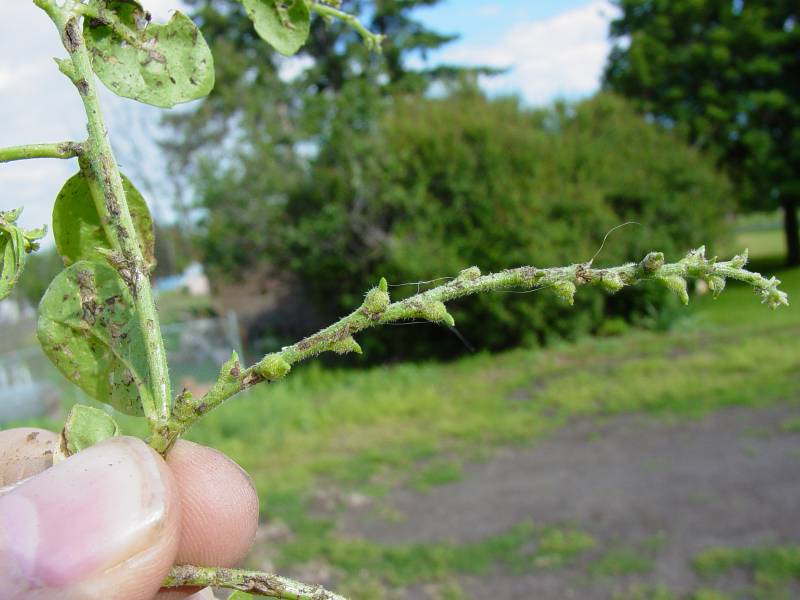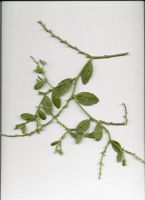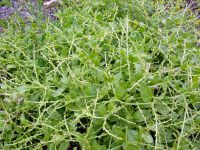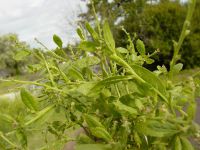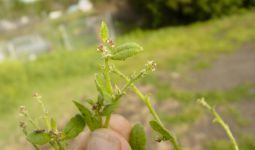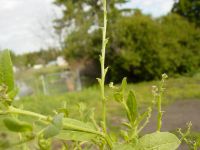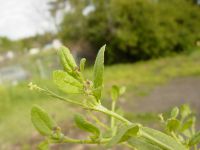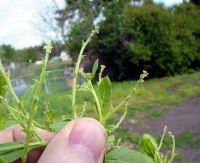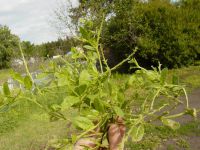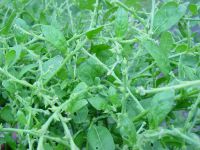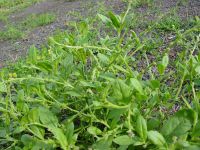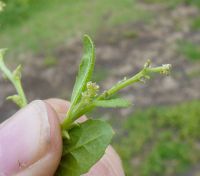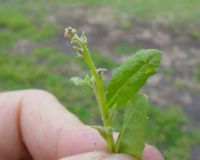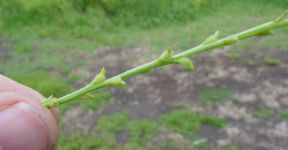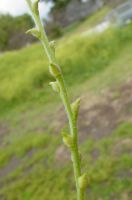Distribution: Occurring east of the Cascades crest in Washington; Washington to California, east to the Rocky Mountains, also along the coast in northeastern U.S.
Habitat: Fields, roadsides, and other disturbed areas.
Flowers: May-June
Origin: Introduced from Eurasia
Growth Duration: Annual, Biennial
Conservation Status: Not of concern
Pollination: Bees, flies, butterflies
Freely-branched annual, strongly pubescent with forked hairs, the stem 1-4 dm. tall.
Leaves all cauline, alternate, short-petiolate, oblong-oblanceolate, 2-5 cm. long, remotely dentate.
Flowers sub-sessile in open, spike-like racemes; pedicles stout, 1 mm. long; sepals 4, not saccate; petals 4, white, spatulate, 1 mm. long, rounded or very shallowly notched; stamens 6; style stout, beaklike, nearly as long as the silicle.
Silicles obovoid, 2-3 mm. long, covered with pungent hairs.
Publication: Hortus Kew. 4: 74. 1812.
Bunias syriaca (L.) M. Bieb.
PNW Herbaria: Specimen records of Euclidium syriacum in the Consortium of Pacific Northwest Herbaria database
WA Flora Checklist: Euclidium syriacum checklist entry
OregonFlora: Euclidium syriacum information
E-Flora BC: Euclidium syriacum atlas page
CalPhotos: Euclidium syriacum photos

